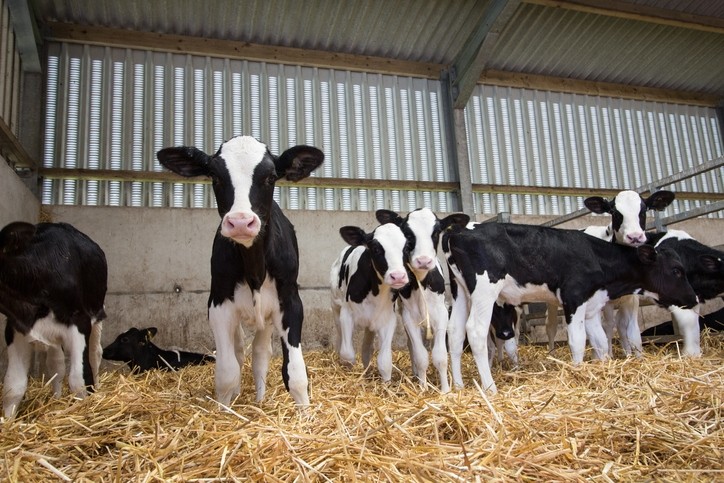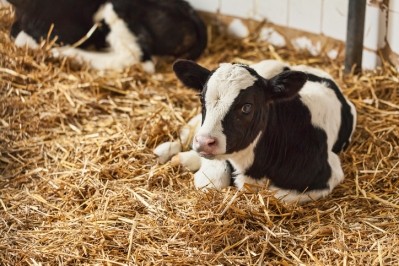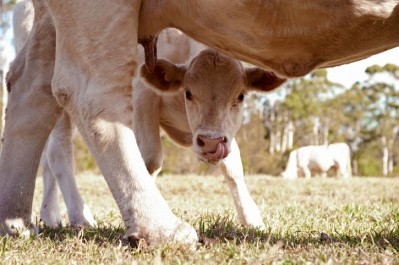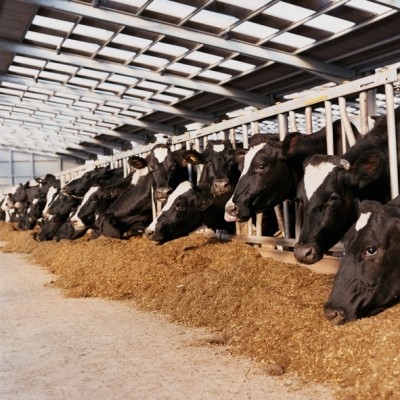Boosting early calf nutrition may yield significantly more milk

The Missouri-headquartered animal nutrition company reported on the results of a study looking at the longer-term implications of a focus on early calf nutrition.
The review concluded that cows raised on the system could generate up to 6,588lbs more milk through their first three lactations compared to cows on a conventional diet, resulting in an additional $98,000 in milk income for every 100 milk cows for a three-lactation period, the company reported.
The study, it said, involved reviews of 314,760 lactation observations in 344 cows.
Examining cow performance through the third lactation provided more information about early nutrition and milk production and on the influence of Purina’s feeding program, said Kevin Dill, senior nutritionist with Purina Animal Nutrition.
“Nutrition, even during those first six months of life, does have lifetime impact on performance,” he told FeedNavigator.
The project expanded on an initial look at the production increase in the first lactation, he added.
The research also helped answer questions from producers regarding continued animal performance, he said. “If they’re going to make the additional investment as a calf, how long are they going to see those benefits from that investment?”
The initial feeding program, called the Purina Ampli-Calf program, focuses on total calf nutrition, primarily energy and protein levels, provided during the first six months of life, he said. The company does its research with Holsteins, but a separate product line has been established for young Jersey.
“We’re providing nutrients to let them express their genetic potential,” said Dill. “We know that [additional] protein in the young animal even helps more fully develop the milk secretory tissue that they’ll have later in life – the amount is important. Protein and energy help take advantage of the growth rate of a neonatal animal.”
'Focused early nutrition'
An initial study of the feeding system found that calves raised in that manner generated about 2,740lbs more milk in their first lactation when compared to those coming from a convention diet, Purina said.
The program works by having producers use a series of nutritional products like milk replacers, calf starter and grower feeds in addition to specified amounts of dry matter every day through the first six months, the company said.
Starting the long-term study, the hope was that the increased production would continue through the second lactation period, said Dill. “We didn’t know it was going to be as much – the benefit through the second lactation was almost as much as the first – that was great to see,” he added.
“We saw a really good difference between the first and second lactation from feeding the Ampli-Calf program,” he said.
By the third lactation, it becomes more difficult to link milk production to early life nutrition alone as there also might be other influencing factors including health events, he said. “It’s hard to say that something that happened in the third lactation that it was because of something in her management as a 5- or 6-month-old calf – there is correlation, but it’s hard to get enough numbers to see it that far removed,” he added.
However, the longer-look at gains in production helps support the initial financial investment in dairy calves, he said.
“The economics are strong for 6,588lbs of additional milk through three lactations,” he said. “When you’re talking about an additional $150-200 per calf through six months of age, depending on current economics – it continues to heighten the value of that investment early on.”
Providing focused early nutrition also may be linked to optimized rumen maturation, which can lead to better weight gains for heifers when they start on a forage-based feed, said Dill. One goal of the feeding program is to have cows physically and physiologically ready earlier to contribute income on a dairy.
“Another key aspect of the feeding program we talk about is in terms of developing the calf on the inside,” he said. “We’ve got to have the stature growth, not just pounds of gain, and as well as the mammary tissue development.”
The program can help prepare cows for their first calving targeted at about 22 months, the company reported.
In addition to improved milk production during multiple lactation cycles, the early nutrition program may also result in improved calf health including reduced morbidity, improved rate of gain, lower cost per rate of gain and a reduction in disease treatment costs, said Dill.
“Every producer might not see each of these, but we have observed these on individual dairies,” he added.















